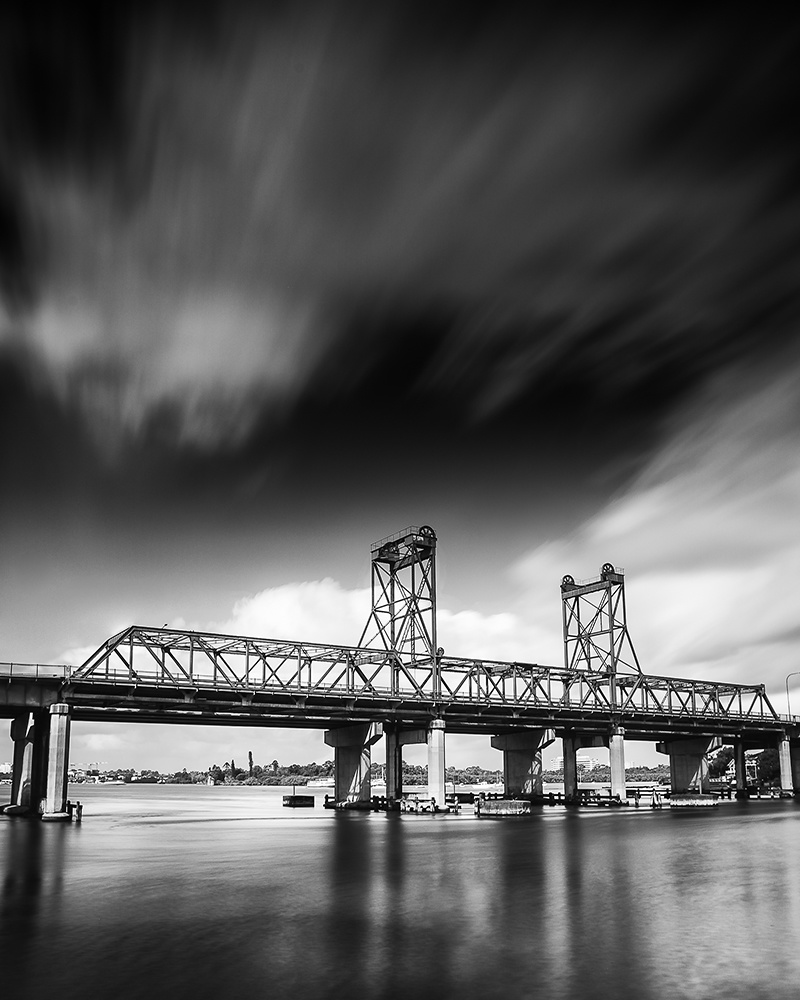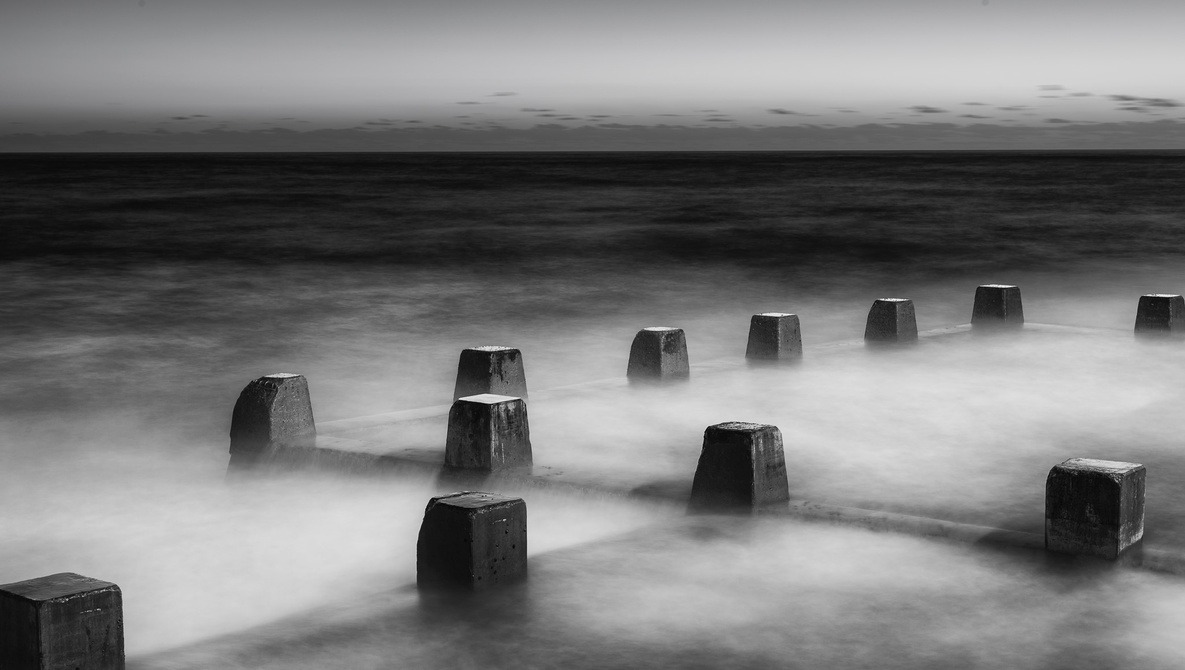The next six months is prime time for shooting black and white landscapes, especially on those gloomy days which can add drama and "wow factor" to your images. I have some compelling reasons why I think you should consider converting from color to black and white.
1. Bad Weather, Good Pictures
Some people believe they should only shoot landscapes on clear, blue sky days, but overcast days with some low cloud action can produce added drama and interest — especially to black and white images. Better yet, if the winds are strong a long exposure can add movement to the clouds and create an ambience of mystery and produce interesting effects and shapes.
Neutral density filters combined with slow shutter speeds of around 30–60 seconds will usually help you produce amazing and dramatic results. The perfect kind of weather for this is on days with skies full of fast moving low lying clouds. To help you plan ahead there are a multitude of phone apps available that help you find the perfect time and place. Check weather apps for weather patterns, wind direction, and strength, rainfall, and water levels of water ways after storms (particularly useful when shooting waterfalls), and tidal movement for coastal shoots.

long exposures black and white landscape photography in Sydney, Australia.
ISO 50, F11 for 30 seconds with a 10 Stop Filter.
Popular apps include Sun Surveyor for checking angle of sun or moon, BOM (Bureau of Meteorology) to check chance of rain and wind speeds, Willy Weather to check tides, and The Photographer's Ephemeris for satellite imagery of potential locations in relation to light and wind direction, moon phase, tides, etc.

Port Melbourne in Melbourne, Australia photographed with a 10-stop NiSi filter for 30 seconds on f/11 ISO 50.
2. Use the Right Gear
A mirrorless or DSLR camera which allows full manual control of your shutter speed, aperture, and ISO is preferred. A sturdy tripod tall enough for accessing the viewfinder at eye level and not light enough to blow over in the wind is a must. A wide-angle lens in the range of a 16-24mm allows you to capture more of the sky and clouds and anything of interest in the frame's foreground. A cable release, wireless remote, or mobile phone app for remotely triggering the camera's shutter and, in the case of the latter, viewing images. I use a Carl Zeiss 18mm lens and Canon 5D Mark II.

Carlingford waterfall after a storm in Sydney, Australia. Photographed with a 10-stop NiSi filter for 30 seconds on ISO 50 f/11.
3. Use Filters
Filters are vitally important for emphasizing the required effects in your images. The proper use of neutral density (ND) filters can also take some time to master. ND filters that block up to 10 stops of light and will allow you to shoot long exposures even in the middle of the day. Most of the movement in the clouds and water in the accompanying photos were taken using a 10-stop ND filter. Most of these shots were taken in the middle of the day using 20-30 second exposures. It's best to manually focus your image first before attaching your filters. Every camera works differently when it comes to getting an accurate shutter speed reading. I use NiSi filters and have a 10 stop, a soft graduated 3 stop, and a circular polarizer.

Under Ryde Bridge in Sydney, Australia. Photographed with a 10-stop NiSi filter under midday sun for 30 seconds. ISO 50 at f/11.
4. Best Camera Settings
You can set most modern digital cameras to shoot black and white images, but you’ll get more control over the tonality of your image if you shoot in color and convert to mono in post using a program like Lightroom, Photoshop, or Silver Efex. In postproduction, try to avoid the simple one-click "Convert to Mono" commands and look for options that let you control the tonal values of each color channel. In Photoshop, adding a Black and White adjustment layer above the main background layer lets you selectively change the tonal values of the Reds, Yellows, Greens, Cyans, Blues, and Magentas individually. Similarly, in Lightroom, you can choose the Black and White sliders in the Develop module to alter the tonality of each color channel.
Shooting in raw is the best option as it allows you more control in editing when you need to change the color temperatures. Having your histogram on while shooting can also help you check if you have a good tonal range of light and dark grays. Make sure you don't blow out the highlights as these may be difficult to fix in post.

Bronte Beach in Sydney, Australia. F11 ISO 50 at 5 seconds with a Nisi Polarising filter.
5. Make a Print
This last step I think is usually given the least amount of priority but is probably the most important. I love the fine art archival quality you can get with Hanhnemeule and Canson paper. You can spend money doing your own printing or use a pro lab that specializes in getting the best results. If you decide to print yourself make sure to calibrate your monitor, printer, and match your color profiles with whatever paper you decide to use. Try creating your own black and white landscapes, it can add a whole new creative dimension to your photography.







Fine article. I've always loved black and white landscapes, and anything to encourage them is worthy in my opinion. I shoot b&w both digitally and with b&w film, with a preference these days for the film approach.
Thanks Richard Keeling. Any other tips you can add?
The only tip I hold really dear to me is to experiment. Try many different approaches and be unafraid that some of them won't work very well.
Great advice to always try new techniques and look at different perspectives.
Great Article, nailed it :)
Thanks a million from Australia!